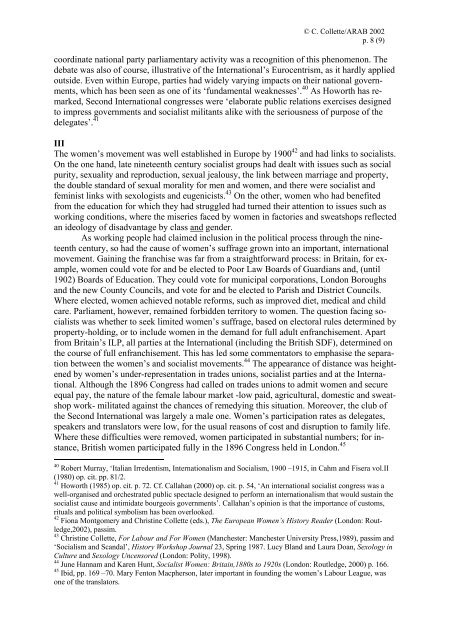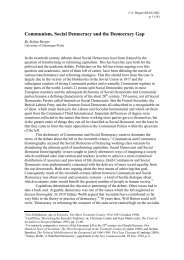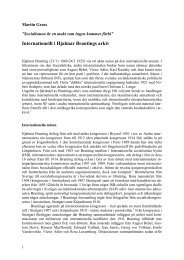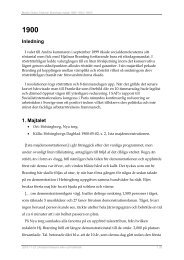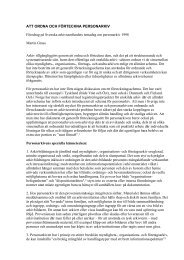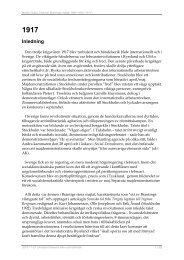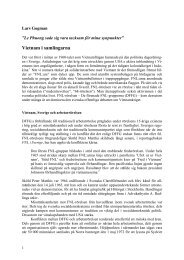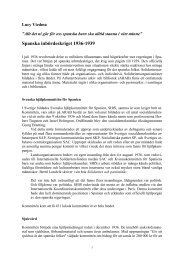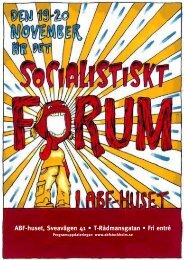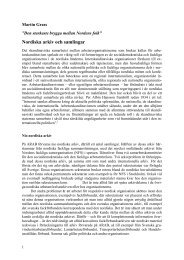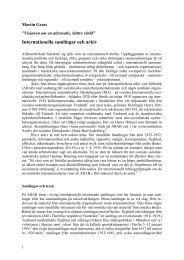Christine Collette
Christine Collette
Christine Collette
- No tags were found...
Create successful ePaper yourself
Turn your PDF publications into a flip-book with our unique Google optimized e-Paper software.
© C. <strong>Collette</strong>/ARAB 2002p. 8 (9)coordinate national party parliamentary activity was a recognition of this phenomenon. Thedebate was also of course, illustrative of the International’s Eurocentrism, as it hardly appliedoutside. Even within Europe, parties had widely varying impacts on their national governments,which has been seen as one of its ‘fundamental weaknesses’. 40 As Howorth has remarked,Second International congresses were ‘elaborate public relations exercises designedto impress governments and socialist militants alike with the seriousness of purpose of thedelegates’. 41IIIThe women’s movement was well established in Europe by 1900 42 and had links to socialists.On the one hand, late nineteenth century socialist groups had dealt with issues such as socialpurity, sexuality and reproduction, sexual jealousy, the link between marriage and property,the double standard of sexual morality for men and women, and there were socialist andfeminist links with sexologists and eugenicists. 43 On the other, women who had benefitedfrom the education for which they had struggled had turned their attention to issues such asworking conditions, where the miseries faced by women in factories and sweatshops reflectedan ideology of disadvantage by class and gender.As working people had claimed inclusion in the political process through the nineteenthcentury, so had the cause of women’s suffrage grown into an important, internationalmovement. Gaining the franchise was far from a straightforward process: in Britain, for example,women could vote for and be elected to Poor Law Boards of Guardians and, (until1902) Boards of Education. They could vote for municipal corporations, London Boroughsand the new County Councils, and vote for and be elected to Parish and District Councils.Where elected, women achieved notable reforms, such as improved diet, medical and childcare. Parliament, however, remained forbidden territory to women. The question facing socialistswas whether to seek limited women’s suffrage, based on electoral rules determined byproperty-holding, or to include women in the demand for full adult enfranchisement. Apartfrom Britain’s ILP, all parties at the International (including the British SDF), determined onthe course of full enfranchisement. This has led some commentators to emphasise the separationbetween the women’s and socialist movements. 44 The appearance of distance was heightenedby women’s under-representation in trades unions, socialist parties and at the International.Although the 1896 Congress had called on trades unions to admit women and secureequal pay, the nature of the female labour market -low paid, agricultural, domestic and sweatshopwork- militated against the chances of remedying this situation. Moreover, the club ofthe Second International was largely a male one. Women’s participation rates as delegates,speakers and translators were low, for the usual reasons of cost and disruption to family life.Where these difficulties were removed, women participated in substantial numbers; for instance,British women participated fully in the 1896 Congress held in London. 4540 Robert Murray, ‘Italian Irredentism, Internationalism and Socialism, 1900 –1915, in Cahm and Fisera vol.II(1980) op. cit. pp. 81/2.41 Howorth (1985) op. cit. p. 72. Cf. Callahan (2000) op. cit. p. 54, ‘An international socialist congress was awell-organised and orchestrated public spectacle designed to perform an internationalism that would sustain thesocialist cause and intimidate bourgeois governments’. Callahan’s opinion is that the importance of customs,rituals and political symbolism has been overlooked.42 Fiona Montgomery and <strong>Christine</strong> <strong>Collette</strong> (eds.), The European Women’s History Reader (London: Routledge,2002),passim.43 <strong>Christine</strong> <strong>Collette</strong>, For Labour and For Women (Manchester: Manchester University Press,1989), passim and‘Socialism and Scandal’, History Workshop Journal 23, Spring 1987. Lucy Bland and Laura Doan, Sexology inCulture and Sexology Uncensored (London: Polity, 1998).44 June Hannam and Karen Hunt, Socialist Women: Britain,1880s to 1920s (London: Routledge, 2000) p. 166.45 Ibid, pp. 169 –70. Mary Fenton Macpherson, later important in founding the women’s Labour League, wasone of the translators.


